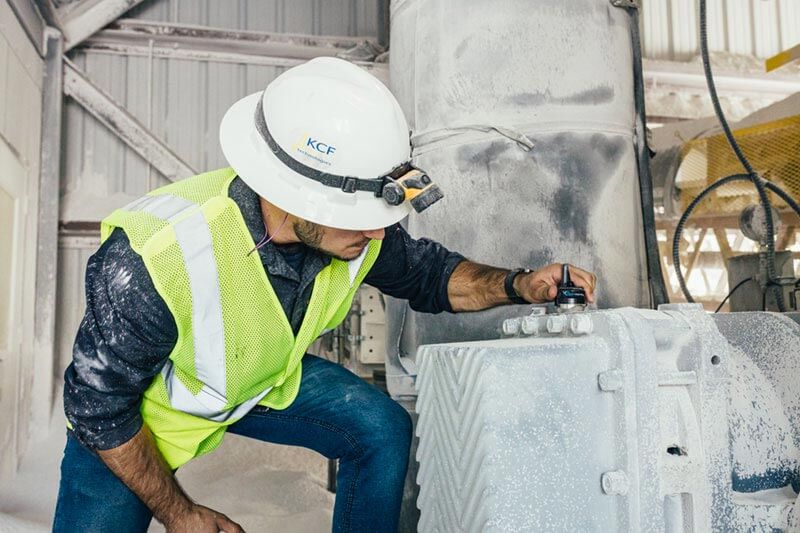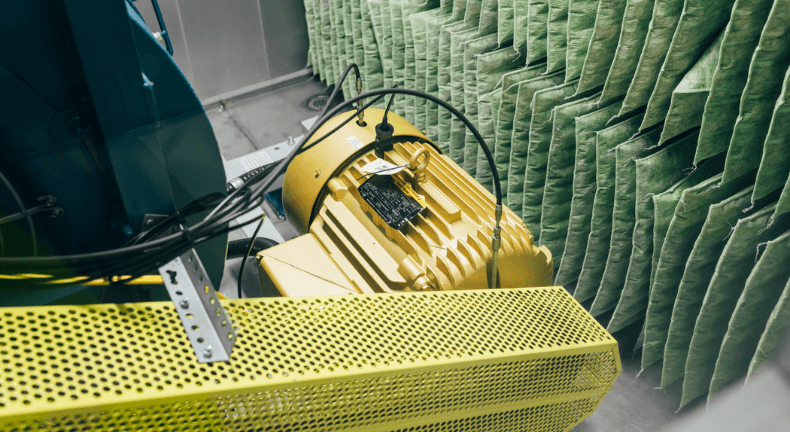What is Condition Monitoring?

In manufacturing and other industrial applications, condition monitoring (or condition-based monitoring) describes the process of monitoring machines to collect information about the asset’s present state.
Condition monitoring is typically enabled by wired or wireless sensor hardware that can collect machine data and feed it back into a software platform for analysis. Condition monitoring data can then be used reactively (e.g. triggering an alarm when a machine is failing) or proactively (e.g. providing data to fuel a machine health optimization strategy).
Route-Based Condition Monitoring
Route-based condition monitoring refers to the practice of manually collecting data from plant assets according to a screening schedule. This can be as high-tech as using wireless route-based sensors that can be read using a handheld device, or as low-tech as jotting down gauge measurements on a notepad. The data collected is used to determine which assets need immediate maintenance attention and which are still performing at an acceptable level.
Route-based condition monitoring was the industry standard for years, but continuous condition monitoring has a number of advantages.
Continuous Condition Monitoring
Continuous condition monitoring refers to any system that is designed to continuously collect data about a specific asset and make it instantly available to system users. Route-based monitoring provides data from a single point in time, making it easier to miss critical information. Continuous condition monitoring makes it easier to see the bigger picture of machine health. It also allows for remote monitoring, versus needing a technician to be within range of a route-based monitoring sensor.
Condition Monitoring vs. Predictive Maintenance
The term “condition-based monitoring” is sometimes used interchangeably with “predictive maintenance” to refer to the practice of interpreting machine data to predict when failure is likely, but condition monitoring is just one element of predictive maintenance. Simply monitoring the condition of your assets can only tell you if failure is happening right now. The process of collecting data over time via condition monitoring and using it to help predict longer-term machine failure is part of a typical predictive maintenance program.
Condition Monitoring Techniques and Technology
Condition monitoring data is the foundation of a successful machine health optimization strategy. Some manufacturing leaders have avoided implementing continuous condition monitoring hardware because they don’t want to deal with the hassle of stopping down machines for a complicated installation process, maintaining yet another moving part, or figuring out what to do with extra cables on and around their assets. Choosing the right technology — hardware that is easy and fast to install, has wireless options, and is rugged enough to withstand the most challenging industrial applications — is critical.
There are a range of hardware options to enable remote condition monitoring and measure inputs like:
- Fluid temperature, humidity, and viscosity
- Presence of sediment, contaminants, or water
- Vibration
- Ultrasonic frequencies
- Pressure
Advanced condition monitoring hardware can wirelessly communicate this data to a platform that can clean, contextualize, and analyze it, sharing machine health insights with users.
Pitfalls of Condition Monitoring
Implementing condition monitoring is an important part of your overall machine health optimization plan, but condition monitoring alone can’t address the root cause of machine health issues. Some manufacturers may invest in condition monitoring technology that amounts to a pricey alarm system, and then feel like their budget was poorly spent when plant performance doesn’t improve.
The key to making the most of your condition monitoring investment is to ensure the data is being analyzed in an intelligent way that lets you be proactive about plant and machine health.
Moving Beyond Condition Monitoring to Machine Health Optimization
Manufacturers can use condition monitoring technology to identify when machines are failing and paint a longer-term picture of the asset’s overall health. This can help reduce downtime and optimize maintenance resource allocation, but fails to address the root of machine health issues.
A strategic approach to machine health uses condition monitoring to gather critical data about your assets and pair it with advanced analytics, machine learning, and expert human analysis to identify why machines fail in the first place and eliminate the conditions that lead to failure. With the right tools, forward-thinking manufacturers can move beyond simple condition monitoring and solve their asset problems permanently.
Contact Us
The journey to true machine health starts with a conversation. Contact us today to learn more about eliminating the root cause of your asset failures.

